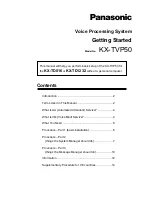
Specifications
67
Manta Technical Manual V7.7.0
Opto-isolated I/Os
2 inputs, 2 outputs
RS232
1 TxD, 1 RxD
Voltage requirements
8 to 30 VDC; PoE
Power consumption
3.6 W @ 12 VDC; 4.2 W PoE
Power consumption
(30 fps variants)
4.6 W @ 12 VDC; 5.4 W PoE
Trigger latency
3
Idle state: 17.0 µs; Frame valid state: 40.8 µs
Trigger latency
3
(30 fps variants)
Idle state: 9.4 µs; Frame valid state: 21.4 µs
Trigger jitter
3
Idle state: 7.6 µs; Frame valid state: 31.4 µs
Trigger jitter
3
(30 fps variants)
Idle state: 5.4 µs; Frame valid state: 17.4 µs
Operating temperature
+5°C to +45°C ambient temperature (without condensation)
Storage temperature
-10°C to +70°C ambient temperature (without condensation)
Body dimensions (L x W x H)
86.4 x 44 x 29
mm
Mass (typical)
PoE model: 210 g; Non-PoE model: 200 g
Interface
IEEE 802.3 1000BASE-T (Gigabit Ethernet), IEEE 802.3af (PoE)
Interface standard
GigE Vision Standard V1.2
Camera control standard
GenICam SFNC V1.2.1 compliant
Regulations
CE, RoHS, REACH, WEEE, FCC, ICES
1
For more information on available optical filters see the
Modular Concept.
2
Manta G-201B, G-201C-30fps has RGB8Packed and BGR8Packed only
3
It is possible to start the exposure of the next frame while the previous frame is read out:
•
Idle state: sensor is ready and camera is idle, waiting for the next trigger
•
Frame valid state: sensor is reading out and camera is busy. If the next frame is requested by an external
trigger in this state, higher latency may occur as compared to the idle state.
Feature
Specification
Manta G-201B
Manta G-201C
Table 18: Manta G-201B, G-201C (including 30 fps variants) model specifications
















































